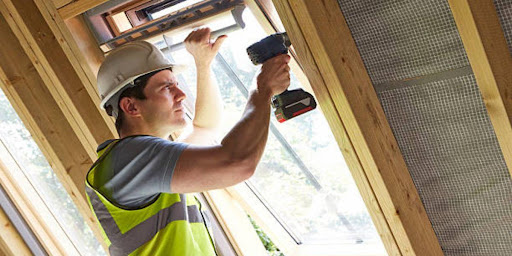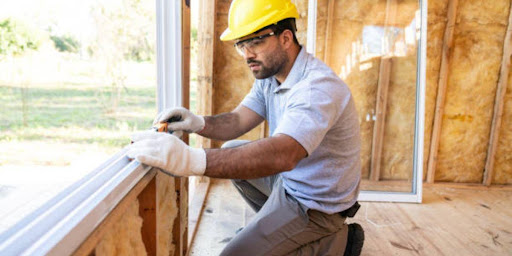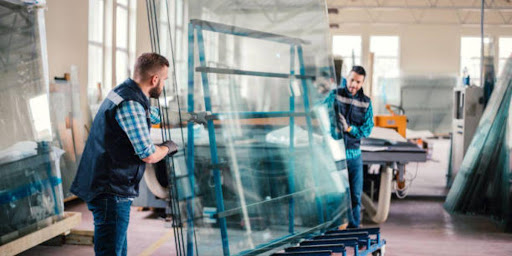Power Articles
Industry Elevating Content
The Role of The Installation Team in Quality Window and Door Projects

PowerArticles
Oct. 23rd, 2023
In the area of window and door projects, the Installation Team emerges as the linchpin of success and customer satisfaction. Their pivotal role transcends mere manual labor; it epitomizes precision, craftsmanship, and attention to detail. This specialized team ensures that the windows and doors, fundamental to a structure’s aesthetics and functionality, are seamlessly integrated. Their expertise not only guarantees the product’s longevity and energy efficiency but also contributes to the overall aesthetics of the property. The Installation Team’s competence is pivotal in bridging the gap between design vision and real-world execution, making them indispensable in the realm of quality window and door projects.
Qualifications and Training
Required Skills and Expertise
- Knowledge of Window and Door Materials: In the windows and doors industry, a deep understanding of various materials such as wood, vinyl, aluminum, and fiberglass is crucial. Installers must be well-versed in the properties, advantages, and limitations of each material to guide customers effectively and ensure the right selection for their specific needs.
- Carpentry Skills: Carpentry forms the foundation of window and door installation. Installers need expertise in measuring, cutting, and fitting windows and doors precisely to ensure a snug, weather-tight fit. This skill is vital for both aesthetics and energy efficiency.
- Safety Training: Safety is paramount in any construction project. Proper training in safety protocols, including ladder usage, power tool handling, and working at heights, is mandatory. Installers must prioritize safety to protect themselves and those around them.
B. Industry Certifications
- Window and Door Installation Certification: A recognized certification in window and door installation verifies an installer’s competence and adherence to industry standards. It demonstrates their ability to handle various installation scenarios, from standard sizes to custom configurations.
- OSHA Certification: Occupational Safety and Health Administration (OSHA) certification ensures that installers are well-versed in safety regulations and practices. This certification helps prevent accidents, injuries, and workplace hazards, making it indispensable in the construction industry.
Pre-Installation Responsibilities
The success of any window and door project hinges on meticulous pre-installation responsibilities undertaken by the installation team. In this context, these crucial tasks can be categorized into three main areas: site assessment, material inspection, and communication with clients.
Firstly, site assessment is essential to ensure a seamless installation process. This involves accurately measuring windows and doors, which is pivotal for ordering the right sizes and minimizing errors. Simultaneously, evaluating the structural integrity of the site is imperative to identify potential challenges or modifications required for proper installation. These steps lay the foundation for a successful project.
Secondly, material inspection is vital to ensure the quality of the windows and doors. The installation team must diligently check for defects in the materials to prevent any future issues. Verifying compatibility between the selected products and the site’s specifications is equally essential to guarantee a precise fit and long-term functionality.
Finally, effective communication with clients is key to meeting their expectations and addressing their concerns. The installation team should set clear expectations from the outset, outlining the project timeline, potential disruptions, and any specific requirements. Furthermore, actively listening to and addressing client concerns throughout the installation process fosters trust and ensures a satisfactory outcome.

Installation Process
The installation process of windows and doors is a critical phase in ensuring the overall quality and performance of these essential home components. A reputable windows and doors company understands the pivotal role their installation team plays in delivering top-notch results.
A. Removal of Existing Windows and Doors:
- Ensuring Safety Measures: The installation team begins by prioritizing safety, ensuring that the removal process doesn’t pose any risks to occupants or workers. This involves assessing potential hazards and implementing safety protocols.
- Proper Disposal of Old Materials: Environmentally responsible disposal of old materials is key. The team should carefully remove and dispose of old windows and doors, recycling where possible, to reduce the project’s environmental footprint.
B. Installation Techniques:
- Framing and Anchoring: Skilled craftsmen employ precision techniques for framing and anchoring new windows and doors. Proper alignment and secure anchoring are essential for structural integrity and aesthetic appeal.
- Weatherproofing: Effective weatherproofing techniques are employed to prevent water infiltration, drafts, and energy loss. This step is crucial for ensuring energy efficiency and indoor comfort.
- Sealing and Insulation: The installation team meticulously seals gaps and insulates around the window or door frame to enhance energy efficiency, noise reduction, and overall comfort within the home.
C. Testing and Quality Control:
- Checking for Air Leaks: Thorough testing is conducted to identify and address any potential air leaks, which can lead to energy inefficiency and discomfort. Proper sealing and insulation are verified.
- Verifying Proper Functionality: The installation team ensures that the windows and doors open, close, and lock smoothly, without any issues that could compromise security or convenience.
3. Ensuring Aesthetic Alignment: The final touch involves ensuring that the installed windows and doors are aligned properly, enhancing the overall aesthetics of the home.

Post-Installation Responsibilities
Post-installation responsibilities are crucial in ensuring the success of window and door projects for a dedicated company. These tasks are essential for not only leaving a lasting impression on the client but also for the long-term functionality and aesthetics of the installed windows and doors.
Cleanup and Debris Removal:
- Removing Construction Waste: The installation team must promptly and thoroughly remove all construction waste, including old windows and doors, packaging materials, and any debris generated during installation. This not only enhances the visual appeal but also maintains safety on the premises.
- Cleaning Work Area: After installation, the team should meticulously clean the work area, including windows and sills. A clean finish ensures that the installed windows and doors look their best and are free from any smudges or marks.
Final Inspection:
- Client Walkthrough: A final inspection with the client is essential. The installation team should walk the client through the project, ensuring the windows and doors meet the client’s expectations in terms of appearance and functionality.
- Addressing Any Remaining Issues: If there are any issues or concerns identified during the walkthrough, the installation team should address them promptly and efficiently, ensuring complete client satisfaction.
Client Education:
- Providing Maintenance Instructions: The installation team should educate the client on proper maintenance practices for the newly installed windows and doors. This includes cleaning routines, lubrication of moving parts, and care for the finishes to prolong their lifespan.
- Warranty Information: Clients must be informed about the product warranties and how to exercise them if needed. This builds trust and ensures that clients are aware of the protection they have for their investment.
Safety Considerations
In the realm of quality window and door projects, ensuring safety is paramount to the success of the installation team. This focus on safety can be broken down into three key aspects:
Personal Protective Equipment (PPE):
- Wearing Appropriate Gear: The installation team must prioritize the use of suitable personal protective equipment. This includes safety glasses, gloves, helmets, and steel-toed boots. These items safeguard team members from potential hazards such as shattered glass, sharp tools, and heavy materials.
Tool Safety:
- Proper Tool Handling: The correct use and maintenance of tools are crucial. The installation team should be well-trained in handling tools like saws, drills, and nail guns to prevent accidents. Regular equipment inspections ensure tools are in optimal condition.
Adherence to Safety Regulations:
- OSHA Guidelines: Strict adherence to the Occupational Safety and Health Administration (OSHA) guidelines is essential. These regulations provide a comprehensive framework for workplace safety, covering issues such as ladder usage, fall protection, and electrical safety.
- Local Building Codes: Complying with local building codes is imperative to guarantee the structural integrity of the project. These codes establish safety standards for window and door installations, including fire egress, impact resistance, and energy efficiency.

Collaboration with Other Teams
Coordination with Sales and Design Teams:
- Clarifying Design Specifications: The installation team must work closely with the design team to ensure that the specifications for windows and doors align with the installation process. Clear communication about dimensions, placement, and any special features is crucial to avoid issues during installation.
- Confirming Material Orders: Collaboration with the sales team is vital for verifying that the right materials have been ordered for each project. Confirming materials in advance helps prevent delays and ensures that the installation team has what they need on-site.
Communication with Quality Assurance:
- Reporting Issues or Concerns: The installation team should maintain open lines of communication with the quality assurance team. If any issues arise during installation that could affect product quality or customer satisfaction, these concerns should be promptly reported. Quick resolution is key to maintaining high-quality standards.
- Documenting Installations for Quality Control: To aid quality assurance efforts, the installation team should meticulously document each installation, including photographs and detailed records. This documentation helps the company assess and improve its processes, ensuring that future projects meet or exceed quality standards.
Continuous Improvement
Continuous improvement is vital in the window and door industry to ensure the highest quality products and services. These are the crucial aspects of continuous improvement within a windows and doors company:
Training and Development
- Staying Updated on Industry Trends: To maintain excellence, the installation team must stay abreast of evolving industry trends. This includes staying updated on the latest window and door materials, technologies, and design preferences. Regular training sessions on these developments are essential to ensure that the team’s skills remain current.
- Attending Workshops and Seminars: Attending industry-specific workshops and seminars is another key component of training and development. These events provide opportunities to learn about innovative installation techniques, safety protocols, and regulatory changes. By participating in such events, the installation team can constantly improve their knowledge and expertise.
Feedback Loop
- Gathering Client Feedback: Client feedback is invaluable in identifying areas for improvement. The installation team should actively seek feedback from customers regarding the quality of the products and services provided. This feedback can be collected through surveys, reviews, or direct communication with clients.
- Implementing Process Improvements: Based on the feedback received, the company should initiate process improvements. This might involve enhancing communication with clients, streamlining installation procedures, or addressing any recurring issues. Regular team meetings and brainstorming sessions can facilitate the implementation of these improvements.

Conclusion
In the space of window and door projects, the installation team plays an indispensable role in ensuring quality outcomes. Their expertise and precision are pivotal in translating design visions into tangible reality. A proficient installation team ensures that windows and doors are fitted accurately, optimizing energy efficiency, security, and aesthetics. They act as the final gatekeepers, ensuring that the product meets the highest standards, preventing issues down the line. Moreover, their commitment to meticulous workmanship enhances customer satisfaction and trust, contributing significantly to the company’s reputation. In essence, the installation team is the linchpin of success in quality window and door projects, underscoring their pivotal role in this specialized industry.
Published By
PowerArticles
Oct. 23rd, 2023